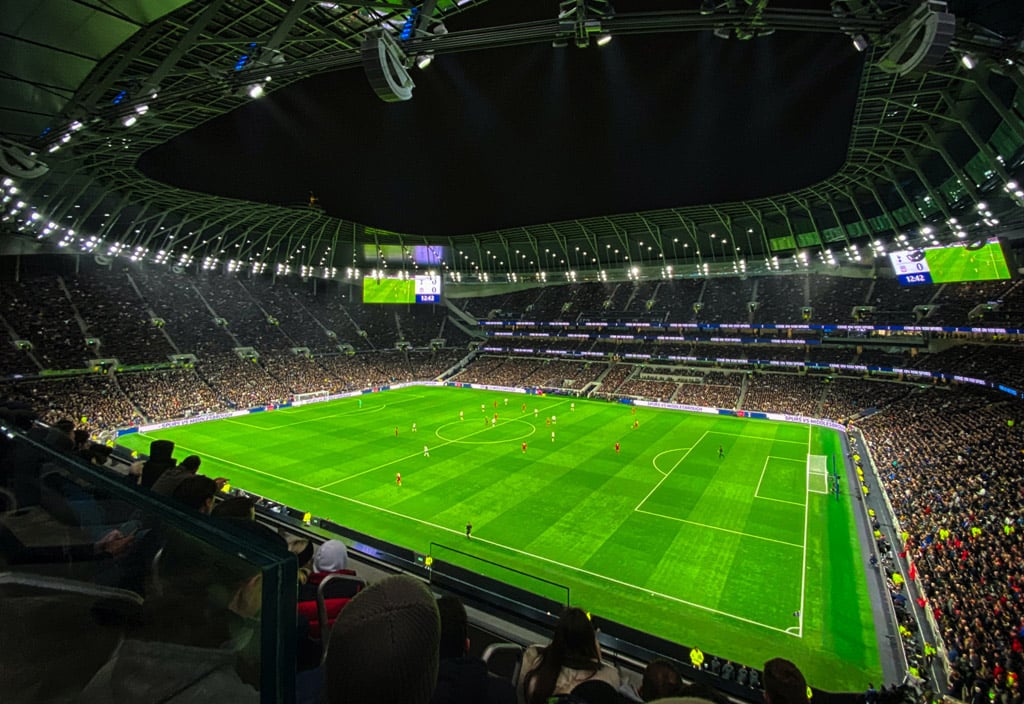We all know even if Chris Foy doesn’t, that Spurs won 3-1 yesterday, the victory sealed by Jan Vertonghen’s second goal of the day. Yet for time immemorial thanks to a ludicrous offsides ruling the score line will read 2-1– the 9th such outcome among 22 league results this season, six of which have ended in our favour. It only underscores the reality that if Spurs are to somehow gain Champions League entry with a Top Four finish, they must amass one more point than the next side, since goal differential will not be our friend. And it underscores what is becoming a distinct trend in the team’s recent performance—we out-produce what our goal differential suggests we should.
Last season Spurs used a strong second half rally to produce a creditable 6th place finish with 69 points (the strongest 6th place finish in Premiership history since the conversion to 38 fixtures) but it came with a fascinating dichotomy. As we all know too well, we were shredded by the three top clubs—Manchester City, Liverpool and Chelsea—losing 5 of 6 games and by a combined scoreline of 25 goals to just 2. Add two more narrow (1-0) losses to 4th place finisher Arsenal and our futility was complete. Yet against the rest of the league Tottenham behaved like an elite club—winning 21 games against 5 draws and just 4 losses, with a goal differential of 53 to 24. Which was it—a side that had no business even sniffing the Top Four or one that belonged in that upper strata? Yet if one ignored the narrative and simply examined the overall differential, the answer would be crystal clear—Spurs were posers near the top and actually should have finished mid-table.
This year the overall pattern is similar even though, thanks to a glorious New Year’s Day victory, the underlying factors are a bit different. Chelsea and City have massive positive differential as befits the league leaders: +32 and +23; Southampton and Man U fall a notch below in both standings and differential: +11 and +15; Arsenal are similar at +14—and then there sits Spurs at just +2. (Liverpool and West Ham sit below us, each with better differential) Look at the glass half full—this team has character and is able to win more close results or gain a precious point more often than the other sides. But experience tells me that is a high-wire act that simply cannot continue—one can observe that Southampton benefits from Sunderland laying down at St. Mary’s to the tune of 8-0 but just as easily note that a dominant Spurs performance vs that same Northeast club resulted in only one goal for 87 minutes, irrespective of the final referee howler denial.
We seem to have our own unique space—perennial overachievers. Last year it was beat up on the dregs and those close to us in ability and be crushed by the best. This year it seems to be simply win the close ones—or an alternative description: fail to crush the poor sides. Not since Redknappian days have Spurs won with decisive flair and non-worrisome margins. Sooner or later this inconsistency will work itself out—and each direction is as likely as the other. If Spurs can barely earn a positive goal differential, they will slip to mid-table status. If they are deserving of consistent contention for European placement, their differential will improve to +20 or better.
These final two statistics sum up the question: 1) In the 19 previous years that the Premiership has played 38 fixtures, only twice has a team earned as many as 65 points with a single-digit positive goal differential: Spurs last season and Newcastle (65 pts; +5 diff.) in 2011-12. The other 39 teams that have scored 65-75 pts—essentially the area one must reach to have a chance at gaining European status—all had a goal differential of at least +10, most at least +20; and 2) Or to do it the other way, in that same time period only one team of 46—Spurs—has had a single-digit positive goal differential and earned over 65 pts. The other 46 averaged 55.9 pts whereas Spurs exceeded that average by 13.
One saving grace—perhaps—is that after 15 years where every team with single-digit goal differentials either kept muddling along, or worse (5 were relegated within two years), lately teams have been able to pop up into the Top Four. The most dramatic example is Man City—using Abu Dhabi money they propelled forward from 2009 into strong contention and two titles. But three other recent sides have leapt as well: Liverpool last season (two years removed from a mediocre year) and— you knew it already- Spurs, twice. The 2007-08 squad was a Champions League qualifier two years later; the 2011 side finished 4th and the narrowest of 5ths the next two seasons, losing out to Chelsea’s improbable European run and Arsenal’s late surge a year later.
Our current model is unsustainable—so which will it be going forward and which aspect of our current team needs the most improvement—the ability to score or to defend? The answer is as obvious as Roberto Soldado’s futility or Emmanuel Adebayor’s fragility: Spurs need another goal scorer. In order to protect leads, you must first acquire them. In order to reduce worry in the back, you must build advantage in the front. The summer transfer window beckons….
[button color=”blue” size=”big” alignment=”center” rel=”follow” openin=”samewindow” url=”http://bit.ly/atspursweb”]On Twitter? Give @thespursweb a follow for everything THFC related[/button]
Keep up to date with all the latest Tottenham news and opinion by following SpursWeb’s Facebook, Twitter and Instagram accounts.

